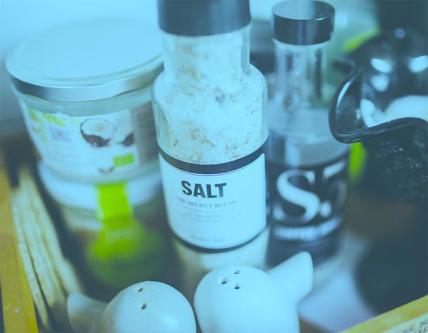- Managing your Practice
-
- Your Benefits
-

Introducing the ultimate Club MD experience
From work to play, and everything in between, we provide you with access to hundreds of deals from recognizable, best-in-class brands, elevating every facet of your life – from practice supports to entertainment, restaurants, electronics, travel, health and wellness, and more. Your Club MD membership ensures that these deals are exclusive to you, eliminating the need to search or negotiate.
Welcome to the ultimate Club MD experience. Your membership, your choices, your journey.
-
- Advocacy & Policy
-
- Collaboration
- News & Events
-

Stay Informed
Stay up to date with important information that impacts the profession and your practice. Doctors of BC provides a range of newsletters that target areas of interest to you.
Subscribe to the President's Letter
Subscribe to Newsletters
-
- About Us
-

How much salt is too much?
March 9, 2018
Together for Health
When consumed in small amounts, salt – or table salt – is good for us. It’s an essential nutrient to help our bodies function properly by working to regulate water balance in cells, helping maintain blood volume, and aiding in nerve function. Plus it makes food taste good. But too much salt can lead to a multitude of health problems. And despite efforts by Health Canada to reduce the amount of salt Canadians consume daily, an alarming 80 per cent of the population still consumes far more than the recommended daily dose of one teaspoon.
 The most common health risk associated with consuming too much salt is high blood pressure, which can put you at risk for a number of other health issues such as heart disease, stroke, and kidney disease. But high blood pressure is a leading preventable risk factor when it comes to our health – and that risk can be lowered substantially by making a few small changes to your diet.
The most common health risk associated with consuming too much salt is high blood pressure, which can put you at risk for a number of other health issues such as heart disease, stroke, and kidney disease. But high blood pressure is a leading preventable risk factor when it comes to our health – and that risk can be lowered substantially by making a few small changes to your diet.
In 2012, Health Canada released new guidelines in an effort to help reduce the amount of salt Canadians consume in their everyday diets. These guidelines aimed to help raise awareness about the dangers of consuming too much salt and to help consumers make more informed choices when choosing foods containing salt – when grocery shopping, cooking at home, or eating out. Unfortunately Health Canada says hasn’t seen the level of decrease in salt intake they were expecting.
So what can you do? Here are a few tips to help reduce the amount of salt you consume:
- Avoid cooking with salt, and instead sprinkle some on your food at serving time
- Instead of canned vegetables, buy fresh or frozen produce
- Substitute fresh fruit or a bowl of cereal for your breakfast bread/toast
- Swap burger buns for low-sodium flour tortillas
- When buying canned or packaged soups, select those labeled low-sodium
- When eating out, ask for sauces or dressings to be served on the side and only use a small amount
These small tricks will help reduce the amount of salt you consume, and help you live a healthier, longer life.




